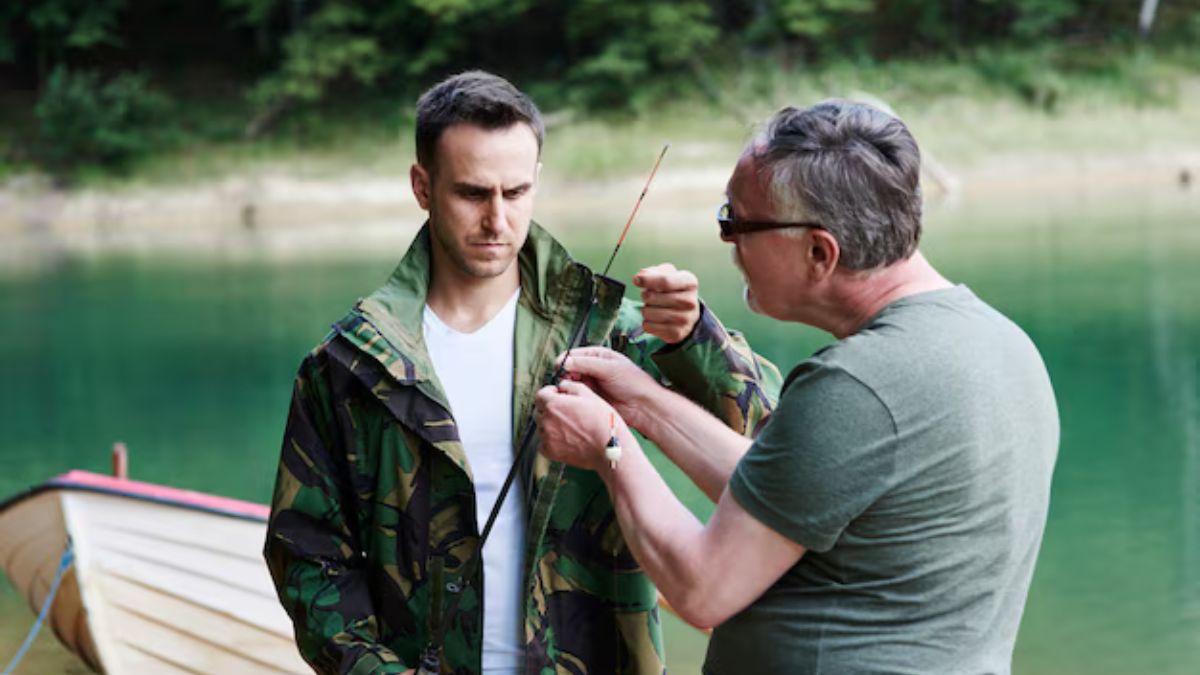HOME
The Current Exchange Rate: How Much is 193 DHS to USD?

Have you ever found yourself wondering how much 193 Dirhams (DHS) is in US Dollars (USD)? Understanding exchange rates can sometimes feel like decoding a complex puzzle. But fear not! In this blog post, we will break down the current state of the DHS to USD exchange rate, explore factors that influence these fluctuations, and provide you with valuable tips on managing international payments. So grab your virtual passport as we embark on a journey through the world of currency conversions!
Understanding Exchange Rates
Exchange rates determine the value of one currency in relation to another, playing a crucial role in international trade and finance. These rates fluctuate constantly due to various factors such as economic indicators, geopolitical events, and market speculation. Understanding exchange rates involves grasping how these elements interact to impact the value of currencies worldwide.
When you see a currency pair like DHS/USD, the first-listed currency (DHS) is known as the base currency, while the second (USD) is the quote or counter currency. The exchange rate tells you how much of the quote currency you need to buy one unit of the base currency. For example, if 1 DHS equals 0.27 USD, it means you would need 0.27 USD to purchase 1 DHS.
Keeping an eye on exchange rates is crucial for businesses engaged in international transactions or individuals planning overseas travel or investments. By monitoring these fluctuations and understanding their implications, you can make informed decisions regarding foreign exchange activities.
Factors That Affect Exchange Rates
Exchange rates can fluctuate due to various factors that influence the supply and demand for a currency. Economic indicators such as inflation rates, interest rates, and GDP growth play a significant role in determining exchange rates. Political stability and performance also impact how investors perceive a country’s currency.
Market speculation can lead to short-term fluctuations in exchange rates as traders buy or sell currencies based on anticipated movements. Trade balances between countries affect exchange rates as well; if one country exports more than it imports, its currency may strengthen against others.
Central bank policies, like interventions to stabilize a currency or quantitative easing measures, can impact exchange rates. External factors such as geopolitical events or natural disasters can also cause sudden shifts in currency values.
Understanding the complex interplay of these factors is essential when analyzing exchange rate movements.
Current State of the DHS to USD Exchange Rate
The current state of the DHS to USD exchange rate is a topic that many individuals and businesses keep a close eye on. Fluctuations in this exchange rate can have significant impacts on international trade, travel, and investments.
Various factors influence the daily movements of currency values. Economic indicators, geopolitical events, market speculation, and government policies all play a role in determining exchange rates. Understanding these dynamics can help predict how the DHS to USD rate might evolve in the short or long term.
As of today, 193 DHS converts to approximately X USD. This figure is subject to change as currencies are traded globally 24/7. Keeping track of real-time exchange rates through financial news sources or online currency converters can assist you in making informed decisions regarding your international transactions.
Whether you’re planning a vacation abroad or conducting business with overseas partners, being aware of the current DHS to USD rate is crucial for budgeting and financial planning purposes. Stay informed and adapt your strategies accordingly to navigate the ever-changing foreign exchange landscape effectively.
How to Calculate Currency Conversions
Calculating currency conversions can be a straightforward process once you grasp the basics. To convert 193 DHS to USD, you need to know the current exchange rate between the two currencies. This rate fluctuates due to various factors, so it’s essential to use up-to-date information.
To calculate the conversion, simply multiply the amount in one currency by the exchange rate. For example, if 1 DHS is equal to 0.27 USD, then multiplying 193 DHS by 0.27 will give you the equivalent in USD.
Online currency converters and mobile apps are convenient tools for quick calculations on-the-go. They provide real-time rates and make converting currencies a breeze for travelers or businesses dealing with international transactions.
Understanding how to calculate currency conversions empowers you to make informed financial decisions when dealing with foreign exchange transactions seamlessly.
Tips for Managing International Payments
When dealing with international payments, it’s crucial to stay informed about fluctuating exchange rates. Keep an eye on the market trends and consider using currency conversion tools to get real-time updates on the rates.
Another tip for managing international payments is to plan ahead. Give yourself enough time to make transactions, especially if you’re expecting variations in exchange rates or processing times due to different time zones.
It’s also wise to diversify your payment methods. Explore options like wire transfers, online payment platforms, or even cryptocurrency depending on what makes the most sense for your specific needs and circumstances.
Always consider any additional fees or charges that may apply when making international payments. Factor these into your budgeting to avoid any surprises down the line and ensure smooth transactions across borders.
Alternatives to Traditional Currency Exchanges
When it comes to managing international payments, there are alternatives to traditional currency exchanges that can offer convenience and cost-effectiveness. One option is using online payment platforms like PayPal or TransferWise, which allow you to transfer money between different currencies with lower fees compared to banks.
Another alternative is utilizing cryptocurrency for cross-border transactions. With the growing popularity of digital currencies like Bitcoin and Ethereum, more businesses and individuals are exploring this decentralized form of exchange as a way to bypass traditional banking systems.
For larger transactions, you may consider using forward contracts or options through foreign exchange brokers. These financial instruments can help protect against fluctuations in exchange rates and provide more flexibility in timing your currency conversions.
Exploring these alternatives can give you more control over your international payments and potentially save you money in the process.
Conclusion
Understanding exchange rates and how they affect currency conversions is essential for anyone involved in international transactions. Keeping an eye on the current state of exchange rates, utilizing online tools for calculations, and exploring alternatives to traditional currency exchanges can all help individuals and businesses make the most of their cross-border payments. By staying informed and proactive, it is possible to navigate the world of global finance with confidence and ease.
HOME
Bowtie Snakes: Nature’s Intriguing Patterns and Behaviors

Bowtie snakes are a mesmerizing species that captivate reptile enthusiasts and casual observers alike. With their striking patterns resembling elegant bowties, these serpents stand out in the animal kingdom for both their appearance and behavior. Found in various habitats across the globe, bowtie snakes possess unique adaptations that enhance their survival skills. From hunting techniques to reproductive habits, there’s much to uncover about these fascinating creatures. Join us as we explore the intriguing world of bowtie snakes and discover what makes them so special in nature’s tapestry.
Physical Characteristics and Habitat
Bowtie snakes are captivating creatures known for their distinctive patterns. Their name comes from the unique bowtie-like markings that adorn their scales. These striking colors can vary widely, ranging from vibrant yellows and greens to more muted browns and blacks.
Typically measuring between three to six feet in length, they possess a slender body structure that aids in agility. Their smooth scales glisten under sunlight, providing both beauty and camouflage among foliage.
These snakes thrive in diverse habitats including forests, grasslands, and wetlands. They prefer areas with plenty of cover like dense vegetation or rocky outcrops where they can hide from potential predators.
The right habitat is essential for their survival as it offers ample opportunities for hunting and breeding while protecting them from threats. Understanding these aspects of the bowtie snake helps highlight its role in maintaining ecological balance within its environment.
Unique Adaptations for Survival
Bowtie snakes possess fascinating adaptations that enhance their survival in diverse environments. Their distinctive coloration provides effective camouflage, allowing them to blend seamlessly into their surroundings. This ability helps them evade predators and ambush unsuspecting prey.
These snakes also exhibit remarkable thermoregulation skills. They bask under the sun to raise their body temperature, which is essential for digestion and metabolism. When it gets too hot, they retreat to shaded areas or burrows.
Additionally, bowtie snake have developed a unique defensive mechanism. When threatened, they can flatten their bodies and display vibrant patterns that startle potential attackers. This visual disruption gives them a chance to escape unharmed.
Their diet consists of various small mammals and reptiles, showcasing an adaptable hunting strategy. These traits collectively contribute to the resilience of bowtie snake in ever-changing ecosystems.
Behavior and Hunting Techniques
Bowtie snakes exhibit fascinating hunting techniques that showcase their adaptability. These reptiles are primarily nocturnal, using the cover of darkness to ambush unsuspecting prey.
With a keen sense of smell and excellent vision, they can detect vibrations in the ground, allowing them to pinpoint potential meals even before making a move. Their distinctive bowtie patterns provide effective camouflage among foliage and rocks.
When it comes time to strike, bowtie snake employ a swift and calculated approach. They often remain motionless for extended periods, waiting patiently until the perfect moment arrives. With incredible speed, they lunge at their prey with precision.
Once caught, these snakes use constriction as their main method of subduing larger animals before consumption. This unique combination of stealth and strength makes them highly successful hunters in diverse environments.
Reproduction and Life Cycle
Bowtie snake have a fascinating reproductive process that begins with courtship displays. Males often engage in intricate dances, showcasing their vibrant patterns to attract females. This visual spectacle is not just for show; it plays a crucial role in mate selection.
Once mating occurs, female bowtie snake typically lay between 4 to 20 eggs. The number can vary based on factors like age and health of the snake. Females carefully select nesting sites, usually hidden within leaf litter or under rocks, providing protection from predators.
After around two months of incubation, hatchlings emerge fully formed and ready to face the world. These young snakes exhibit the same distinctive markings as adults but are smaller and more vulnerable initially. They rely on instinctual behaviors for survival, such as seeking shelter immediately after hatching to evade potential threats.
Conservation Efforts and Threats
Bowtie snakes face numerous threats that jeopardize their survival. Habitat loss remains a significant concern, primarily due to urban development and agriculture. As natural environments shrink, these unique creatures struggle to find suitable homes.
In response, conservation efforts are underway. Organizations work tirelessly to protect critical habitats through land preservation initiatives. These projects aim to maintain the delicate balance of ecosystems that support bowtie snake populations.
Illegal trade poses another danger. Due to their striking appearance, some may fall victim to collectors seeking exotic pets. Raising awareness about this issue is essential in preventing exploitation and ensuring these snakes thrive in the wild.
Research programs also play a vital role by studying population dynamics and behaviors. Understanding how bowtie snakes interact with their environment helps create more effective conservation strategies tailored specifically for them.
Fun Facts and Cultural Significance
Bowtie snakes have a fascinating presence in various cultures. Their unique patterns often symbolize transformation and adaptability, echoing the intricate designs of their scales.
In some Indigenous communities, these snakes are seen as messengers of change, embodying lessons about resilience in nature. They inspire tales that celebrate survival against odds.
Their striking appearance also captivates artists and designers. Bowtie snake motifs appear in jewelry, clothing, and home decor, serving as reminders of nature’s beauty.
Moreover, they play roles in folklore across different regions. Stories featuring bowtie snakes often highlight themes of wisdom and protection. Such narratives deepen our connection to wildlife and emphasize respect for all creatures.
These intriguing reptiles remind us not only of biodiversity but also how intertwined we are with the world around us through culture and art.
Conclusion
Bowtie snakes are a fascinating blend of beauty and adaptability. Their unique patterns not only serve as camouflage but also reflect the intricate designs of nature. These reptiles have evolved remarkable traits that allow them to thrive in diverse habitats, showcasing their resilience.
The behaviors displayed by bowtie snakes during hunting reveal their cunning intelligence. From ambush techniques to swift strikes, they demonstrate an impressive understanding of their environment. Reproduction is equally captivating, with complex courtship rituals that ensure the survival of future generations.
As we explore the conservation efforts aimed at protecting bowtie snakes from various threats, it becomes clear how crucial it is to preserve their natural habitats. Awareness and education can make a significant difference in safeguarding these intriguing creatures for years to come.
With their striking appearance and vital role in ecosystems, bowtie snakes deserve admiration and respect. Learning more about them enhances our appreciation for wildlife and reinforces our commitment to environmental stewardship. The world would be less vibrant without these extraordinary snakes weaving through our landscapes.
HOME
Exploring Qxefv: Tips for Effective Implementation

In today’s fast-paced business landscape, organizations are constantly searching for innovative solutions to stay ahead. Enter Qxefv, a transformative approach designed to enhance operational efficiency and drive growth. But what exactly is Qxefv? Imagine a system that not only optimizes processes but also fosters collaboration and boosts productivity across teams. As companies face mounting pressures to adapt and evolve, implementing Qxefv could be the game-changer you need. Let’s dive into how this powerful tool can revolutionize your organization from the ground up.
Benefits of Implementing Qxefv
Implementing Qxefv brings a multitude of advantages to organizations. One standout benefit is enhanced efficiency. By streamlining processes, teams can focus on what matters most—delivering value.
Another key advantage is improved collaboration. Qxefv fosters communication across departments, breaking down silos and encouraging teamwork. This collaborative spirit often leads to innovative solutions that drive growth.
Data-driven decision-making is another significant perk. With Qxefv’s analytics capabilities, businesses gain insights into performance metrics and trends. These insights empower leaders to make informed choices that align with company goals.
Additionally, cost savings are a major attraction for many companies adopting Qxefv. By optimizing resource allocation and reducing waste, organizations can allocate funds more effectively.
The adaptability of Qxefv allows it to grow alongside your business needs. As your organization evolves, so does the functionality of this powerful tool.
Step-by-Step Guide for Implementation
Implementing Qxefv requires a structured approach. Start by assessing your current processes. Identify areas where Qxefv can add value.
Next, form an implementation team. This group should include key stakeholders from various departments to ensure diverse insights and smooth integration.
Then, set clear objectives. Define what success looks like for your organization with Qxefv in place.
After establishing goals, focus on training. Equip your team with the necessary skills through workshops or online courses tailored to Qxefv’s functionalities.
Once training is complete, begin a pilot phase. Test the system in a controlled environment before full-scale rollout. Gather feedback during this period for adjustments.
Monitor performance continuously post-implementation. Regular evaluation helps refine processes and optimize results over time while ensuring that everyone remains aligned with your objectives.
Common Challenges and How to Overcome Them
Implementing qxefv can be a transformative experience, yet challenges often arise. One common hurdle is resistance to change. Employees may feel uncertain about new processes, leading to pushback.
To combat this, clear communication is crucial. Share the benefits of qxefv openly and involve team members in discussions. This fosters a sense of ownership and eases transitions.
Another challenge is technical difficulties. Integration with existing systems might not be seamless at first. Testing early and providing comprehensive training can help bridge gaps.
Measuring success can prove tricky without proper metrics in place. Establish key performance indicators (KPIs) that align with your goals for qxefv from the start. Regularly review these KPIs to stay on track.
Addressing these obstacles head-on will pave the way for smoother implementation and better outcomes as you embrace qxefv’s potential within your organization.
Real-Life Success Stories
Many organizations have embraced qxefv, transforming their operations in remarkable ways. One notable success story comes from a mid-sized tech company that struggled with project management inefficiencies. By implementing qxefv, they streamlined communication and enhanced collaboration among teams. The result? A 30% increase in project delivery speed.
Another inspiring example is a healthcare provider that utilized qxefv to improve patient care coordination. With real-time data sharing and improved workflows, this organization saw a significant reduction in patient wait times and increased satisfaction scores.
Even small businesses are reaping the benefits of qxefv. A local retail shop adopted it for inventory management, leading to more accurate stock levels and reduced overstock costs. This not only boosted profits but also allowed them to focus on customer experience.
These stories highlight how adaptable qxefv can be across various sectors while driving efficiency and growth.
Best Practices for Maximizing Results with Qxefv
To maximize results with Qxefv, start by aligning your goals with its capabilities. Clearly define what success looks like for your organization. This clarity will guide implementation and keep the team focused.
Engage all stakeholders early in the process. Their insights can enhance adoption and help identify potential roadblocks before they arise. Regular communication ensures everyone is on the same page.
Utilize training sessions to get everyone up to speed. Knowledge gaps can hinder progress, so offer ongoing support as users familiarize themselves with Qxefv’s features.
Monitor performance metrics closely during rollout. Analyzing data helps you make informed adjustments in real time, leading to better outcomes.
Encourage a culture of feedback. Continuous improvement flourishes when team members feel comfortable sharing their experiences and suggesting enhancements related to Qxefv’s use within the organization.
Conclusion: Embracing the Power of Qxefv in Your Organization
Embracing Qxefv can transform how your organization operates. Its innovative design and potential for integration make it a powerful tool. By harnessing its capabilities, you position yourself to enhance efficiency and collaboration.
As you implement Qxefv, consider the tips shared in this article. Tailor your approach based on the unique needs of your team. The real-life success stories serve as inspiration; they show that with commitment and strategic planning, substantial improvements are achievable.
The benefits of adopting Qxefv extend beyond immediate results. They pave the way for long-term growth and adaptability in an ever-evolving landscape. With careful navigation of challenges and a focus on best practices, organizations can unlock remarkable potential.
Now is the time to take action. Embrace Qxefv wholeheartedly and witness how it revolutionizes operations within your organization.
HOME
Back Casting Room: Enhancing Your Fly Fishing Skills

Fly fishing is more than just a hobby; it’s an art form that blends patience, skill, and a deep connection to nature. Whether you’re standing knee-deep in a river or perched on the edge of a serene lake, every cast opens up new opportunities for adventure. One crucial aspect of this craft is backcasting—a technique that can make or break your success on the water.
Imagine yourself casting gracefully as you watch your line dance through the air before landing perfectly on the surface of the water. But to achieve that level of finesse, mastering backcasting is essential. This technique allows you to create longer casts with precision while avoiding obstacles behind you.
In this guide, we’ll dive into everything you need to know about honing your backcasting skills—from understanding its importance to identifying common pitfalls and sharing expert tips for improvement. Whether you’re a rookie angler or looking to refine your techniques, enhancing your abilities in what we like to call the “back casting room” could be just what you need for an unforgettable fly fishing experience!
The Importance of Proper Backcasting Technique
Proper backcasting technique is crucial for any fly fisher looking to refine their skills. It sets the stage for a successful cast, allowing you to place your fly precisely where fish are lurking.
When executed correctly, backcasting gives you the necessary distance and power. This allows the line to build momentum before it unfurls forward. A smooth transition between the two phases makes all the difference in accuracy.
Many new anglers overlook this step, focusing solely on their forward cast. However, neglecting your backcast can lead to tangles or missed opportunities.
Practicing in open spaces helps develop muscle memory. With time and dedication, you’ll find that mastering this skill enhances both your confidence and success on the water.
Common Mistakes in Backcasting and How to Avoid Them
Backcasting can be tricky, and many anglers fall into common pitfalls. One frequent mistake is not having enough space behind you. If you’re in a cramped area, your backcast may hit obstacles like trees or bushes, leading to frustration.
Another issue arises from incorrect rod positioning. Anglers often raise the rod tip too high during the backcast. This can result in poor line control and energy loss. Instead, aim for a more level trajectory that allows for smoother transitions.
Timing plays a crucial role as well. Rushing the cast can compromise your line’s momentum, resulting in tangles or weak deliveries. Focus on a smooth rhythm instead of speed.
Failing to follow through with your cast limits distance and accuracy. A proper follow-through ensures that all the energy transfers effectively into your forward cast. Being aware of these mistakes helps refine your technique significantly when practicing in any back casting room setting.
Tips for Improving Your Backcasting Skills
To enhance your backcasting skills, start with practice. Spend time in a spacious area where you won’t be disturbed. This allows you to focus entirely on your technique without the pressure of catching fish.
Visualize your movement before executing it. Imagine the path of your line and how it interacts with the water. This mental exercise can improve muscle memory and precision.
Use slow, deliberate motions when casting backward. Rushing can lead to mistakes that become habits over time. Gradually increase speed as you feel more comfortable.
Incorporate video analysis into your training sessions if possible. Recording yourself can reveal areas for improvement that might not be apparent in real-time.
Consider enlisting a mentor or coach who specializes in fly fishing techniques. A fresh set of eyes can provide valuable feedback and guidance tailored to your unique style.
Tools and Equipment for Successful Backcasting
When it comes to successful backcasting, having the right tools can make a significant difference. A quality fly rod is essential. Look for one that matches your skill level and fishing style.
Your line choice also matters greatly. Opt for a weight-forward floating line to facilitate smooth casting movements. It helps to control your cast better, especially during backcasts.
Don’t overlook the importance of leaders and tippets. These components connect your fly to the line and play a crucial role in presentation.
Consider using practice rods or specialized casting tools designed for honing your skills in a controlled environment—a dedicated back casting room can be an excellent investment! With these tools at hand, you’ll find yourself making more precise casts while enjoying the great outdoors even more.
Advanced Techniques for Challenging Fishing Environments
When faced with challenging fishing environments, adaptability is key. One effective technique is the double haul. This method allows you to generate extra line speed, which is crucial in windy conditions. It can significantly improve your distance and accuracy.
Another advanced tactic involves utilizing roll casts when space is limited. This cast requires less back movement, making it ideal for tight spots like overhanging branches or crowded shorelines.
Don’t underestimate the value of adjusting your leader length based on water conditions. A shorter leader can help prevent tangling and enhance control in fast-moving streams.
Practice targeting specific structures such as rocks or fallen trees. By honing in on these locations, you’ll increase your chances of attracting fish hiding within their cover. Each environment presents its own unique challenges; embracing them will elevate your fly fishing experience dramatically.
Safety Precautions when Backcasting
Safety is paramount when backcasting. It’s crucial to be aware of your surroundings. Always check for other anglers, trees, or obstacles behind you before casting.
Ensure that you maintain a safe distance from others. Fly lines can travel quickly and may cause injury if they hit someone unexpectedly.
Wear protective eyewear to shield your eyes from errant hooks and line snaps. A good pair of polarized glasses not only protects but also enhances visibility in the water.
Additionally, consider wearing gloves while handling tackle. This simple precaution can prevent cuts and scrapes during those enthusiastic moments on the water.
Practicing your cast in a wide-open area can help develop confidence while reducing risks associated with tight spaces or crowded environments. Prioritize safety; it allows you to focus on improving your skills without distractions.
Conclusion: Mastering the Art of Backcasting in Fly Fishing
Mastering the art of backcasting can significantly enhance your fly fishing experience. It sets the foundation for effective casting and helps you deliver your line with precision. As you refine this skill, you’ll notice improvements not just in distance but also in accuracy.
By understanding the importance of technique and recognizing common pitfalls, you equip yourself with knowledge that makes every outing more enjoyable. Implementing tips and utilizing proper tools will further elevate your performance on the water.
Advanced techniques allow anglers to tackle various environments confidently while prioritizing safety ensures a worry-free experience. The journey of mastering backcasting is ongoing, filled with practice opportunities that lead to greater satisfaction when reeling in that perfect catch.
Embrace these strategies, devote time to practice, and watch how your abilities flourish as you make each cast count on the serene waters where fly fishing dreams come alive.
-

 TECHNOLOGY4 months ago
TECHNOLOGY4 months agoExploring the Benefits of Using Tanzohub for Your Blog
-

 ENTERTAINMENT4 months ago
ENTERTAINMENT4 months agoThe Legendary Career of the Half of a 1990s-2000s Rock Duo with Six Grammys
-

 HEALTH3 months ago
HEALTH3 months agoThe Ultimate Guide to Using Greenheal.net for Holistic Wellness
-

 HEALTH4 months ago
HEALTH4 months agoThe Secret Ingredient for Radiant Skin: All About Oridzin
-

 NEWS3 months ago
NEWS3 months ago5 Fascinating Facts About Mgj Doppy Tlae That Will Blow Your Mind
-

 ENTERTAINMENT4 weeks ago
ENTERTAINMENT4 weeks agonhentai 455058: The Ultimate Guide to Understanding this Fan-Favorite Manga
-

 HEALTH5 months ago
HEALTH5 months agoQxefv: The Ultimate Solution for Stress Relief and Wellness
-

 NEWS5 months ago
NEWS5 months agoUnlocking the Potential of SSIS 816 in Data Integration
